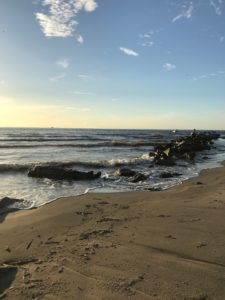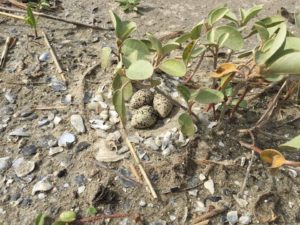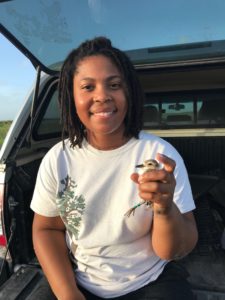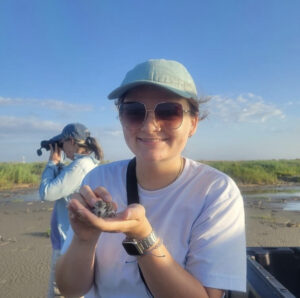
The Northern Gulf of Mexico is a dynamic coastal system where few areas are undeveloped, and habitat loss or alteration is a threat to birds throughout their annual cycles. Louisiana alone has lost 1,880 square miles of land since the 1930s due to natural and anthropogenic factors, including the management of the Mississippi River for navigation and flood prevention, creating canals for transport through coastal marshes, natural land loss due to subsidence, and sea level rise. If the current rate of loss in Louisiana continues, 2,250 additional square miles will be lost within the next 50 years.
In order to mitigate the effects of climate change and continued use of coastal areas by humans, the Coastal Protection and Restoration Authority has developed a Coastal Master Plan that intends to protect communities vulnerable to erosion and storm damage, restore lost land, and limit saltwater intrusion. On the coast of southern Louisiana, over 3 dozen coastal restoration projects have been completed since 1997, and over $1 billion spent since 2007. These efforts claim to increase habitat and benefit wildlife in general, but more studies need to be conducted post-restoration to assess the long-term effects of beach restoration, specifically with regard to the nest survival of beach-nesting birds.

Beach-nesting birds have developed many physiological and behavioral adaptations for living in coastal environments, such as ground nesting, egg camouflage, nest defense displays, and coloniality. Our research on the southern coast of Louisiana aims to explore the challenges that beach-nesting birds face during the breeding season and whether the evolutionary adaptations these birds exhibit continue to maintain adequate population viability (via nest survival) in the face of widespread human-induced changes to the environment.

PhD candidate, Kiah Williams, is studying the effects of beach restoration on nest survival rates and causes of nest failure Wilson’s Plovers, Least Terns, and Common Nighthawks in Louisiana. Data for these projects is collected in collaboration with Audubon Louisiana, the Barataria-Terrebonne National Estuary Program, and University of Louisiana-Lafayette Department of Biology. On a broader scale, Kiah is also conducting a meta-analysis to determine the behavioral strategies and external factors that affect reproductive success in all temperate and tropical beach-nesting bird species researched thus far, and how these factors interact to either increase or decrease nest survival. Additionally, Kiah is comparing nest fates across 3 beach nesting bird species in coastal Louisiana using camera trap data.
Past research includes studying the critical period between hatching and fledging to understand habitat use and movement in Wilson’s Plover chicks, and understanding annual return patterns and site fidelity of adult and first year Wilson’s Plovers using the Motus Wildlife Tracking System.
Funding for projects were provided by Tulane Department of Ecology and Evolutionary Biology, Louisiana Ornithological Society, Louisiana Environmental Education Commission, Barataria-Terrebonne National Estuary Program, Wilson Ornithological Society, Eastern Bird Banding Association, Animal Welfare Institute.
Press
New Orleanian’s Study Hopes to Learn More About Shorebirds- St. Mary Now
Lab members involved in this project:




